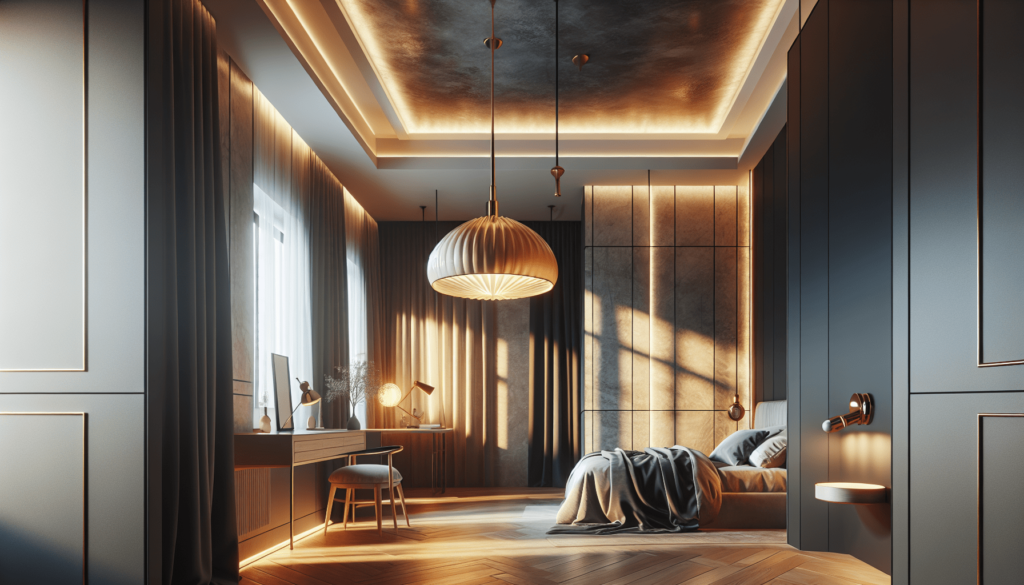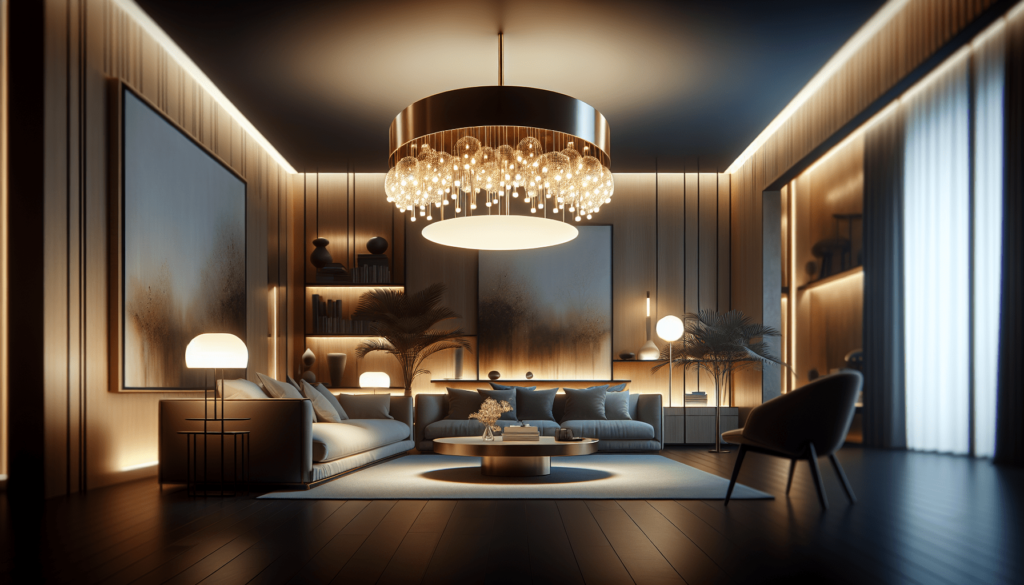Welcome to “Expert advice on pendant lighting” where we will provide you with valuable tips and insights on how to choose, install, and style pendant lighting in your home. From selecting the right size and style to playing with different heights and arrangements, we’ve got you covered. Whether you’re looking to create ambiance in the living room or enhance task lighting in the kitchen, these expert tips will help you make the most of your pendant lighting fixtures. Let’s brighten up your home one pendant light at a time! Are you looking to upgrade the lighting in your home with some stylish pendant lights? If so, you’ve come to the right place! Pendant lighting can add a touch of elegance and sophistication to any room, but with so many options to choose from, it can be overwhelming to find the perfect fit for your space.

What is Pendant Lighting?
Let’s start with the basics. Pendant lighting is a type of light fixture that is suspended from the ceiling by a rod, chain, or cord. These fixtures typically feature a single light source, which is enclosed by a shade or housing. Pendant lights come in a variety of shapes, sizes, and styles, making them a versatile addition to any room in your home.
Pendant lighting is a popular choice for task lighting, as it can provide focused illumination in specific areas of a room, such as above a kitchen island or dining table. However, pendant lights can also be used as ambient lighting to create a warm and welcoming atmosphere in living rooms, bedrooms, and entryways.
Why Choose Pendant Lighting?
Pendant lighting offers several advantages over other types of light fixtures. For starters, pendant lights are a stylish and versatile option that can complement a wide range of design styles, from modern and minimalist to traditional and eclectic. Additionally, pendant lights are available in a variety of finishes and materials, allowing you to personalize your lighting to match your existing decor.
Another benefit of pendant lighting is its ability to direct light exactly where you need it. Unlike overhead ceiling lights, pendant lights can be positioned at a specific height and angle to illuminate a targeted area, making them ideal for task lighting or highlighting architectural features in a room.

How to Choose the Right Pendant Lighting
With so many options available, it can be challenging to find the perfect pendant lights for your home. Here are some tips to help you choose the right pendant lighting for your space:
Consider the Size and Scale
When selecting pendant lights, it’s essential to consider the size and scale of the fixtures in relation to the room they will be installed in. Large pendant lights can make a bold statement in spacious rooms with high ceilings, while smaller pendant lights are better suited for more intimate spaces.
A general rule of thumb is to choose a pendant light that is 12-20 inches smaller than the width of your table or island to prevent the fixture from overpowering the space. Additionally, consider the height of the ceiling when selecting pendant lights, as taller ceilings may require longer rods or chains to achieve the desired look.
Think About the Style
Pendant lighting comes in a wide range of styles, from sleek and modern to vintage and industrial. When choosing pendant lights, consider the overall style of your home and select fixtures that complement your existing decor.
Whether you prefer the clean lines of a contemporary pendant light or the classic elegance of a traditional chandelier, there is a pendant light style to suit every taste. Don’t be afraid to mix and match different styles to create a unique and personalized look in your home.
Choose the Right Bulb
The type of bulb you choose for your pendant lights can have a significant impact on the overall look and feel of the room. LED bulbs are an energy-efficient option that can help reduce utility costs and minimize heat output, while incandescent bulbs offer warm, ambient light that is perfect for creating a cozy atmosphere.
Consider the color temperature and brightness of the bulbs when selecting pendant lights. Soft white bulbs are ideal for creating a warm and inviting ambiance, while daylight bulbs are perfect for task lighting in areas where you need bright, focused illumination.

Installing Pendant Lighting
Once you’ve chosen the perfect pendant lights for your space, it’s time to install them. While some homeowners may prefer to hire a professional electrician for this task, pendant lighting installation can be a relatively straightforward process for those with a basic understanding of electrical work.
Gather the Necessary Tools
Before you begin installing your pendant lights, make sure you have all the tools you’ll need for the job. This may include a screwdriver, wire strippers, electrical tape, and a ladder for accessing high ceilings. Additionally, be sure to turn off the power to the area where you will be installing the pendant lights to avoid the risk of electric shock.
Remove the Existing Fixture
If you are replacing an existing light fixture with pendant lights, start by turning off the power to the fixture at the circuit breaker. Use a screwdriver to loosen the screws holding the old fixture in place, then carefully remove the fixture from the ceiling. Disconnect the wires and set aside the old fixture for disposal.
Install the Mounting Bracket
Next, install the mounting bracket for the pendant lights according to the manufacturer’s instructions. This bracket will secure the pendant lights to the ceiling and provide a stable base for the fixtures. Use a screwdriver to attach the bracket to the electrical box in the ceiling, making sure it is securely in place before proceeding.
Connect the Wiring
Once the mounting bracket is installed, it’s time to connect the wiring for the pendant lights. Start by stripping about 3/4 inch of insulation from the end of the wires on both the light fixture and the ceiling. Match the wires by color (black to black, white to white, and green or bare copper to the grounding wire) and twist them together securely. Cover the exposed wires with electrical tape to ensure a safe and secure connection.
Attach the Pendant Lights
With the wiring in place, it’s time to attach the pendant lights to the mounting bracket. Carefully lift the fixture and line up the mounting screws with the holes on the bracket. Secure the pendant lights in place by tightening the screws with a screwdriver, making sure the fixtures are level and secure.
Test the Lights
Before completing the installation process, it’s crucial to test the pendant lights to ensure they are working correctly. Turn the power back on at the circuit breaker and flip the light switch to illuminate the fixtures. Check that the bulbs are functioning and that the pendant lights are providing the desired amount of light in the room.
Adjust the Height
Once the pendant lights are installed and working properly, you may need to adjust the height of the fixtures to achieve the desired look. Most pendant lights can be adjusted by shortening or lengthening the chain or rod that suspends them from the ceiling. Experiment with different heights until you find the perfect placement for your pendant lights.

Maintenance and Care Tips for Pendant Lighting
To keep your pendant lights looking their best and functioning properly, it’s essential to properly maintain and care for them. Here are some tips to help you extend the life of your pendant lights:
Clean Regularly
Dust and debris can accumulate on pendant lights over time, causing them to appear dull and dim. To keep your pendant lights looking their best, dust them regularly with a soft, dry cloth or duster. For stubborn stains or grease buildup, use a mild soap and water solution to clean the fixtures, taking care to dry them thoroughly afterward.
Check and Tighten Connections
Periodically inspect the wiring and connections for your pendant lights to ensure they are secure and intact. Loose or damaged wiring can lead to electrical hazards and malfunctions, so be sure to tighten any loose connections and replace any frayed wires as needed.
Replace Bulbs as Needed
As with any light fixture, the bulbs in your pendant lights will need to be replaced periodically to maintain optimal performance. Keep track of the lifespan of the bulbs in your pendant lights and replace them when they become dim or start flickering. Be sure to follow the manufacturer’s recommendations for bulb replacement to ensure compatibility with your pendant lights.

Conclusion
In conclusion, pendant lighting is a versatile and stylish option for illuminating your home. Whether you’re looking to add task lighting to your kitchen or create a warm ambiance in your living room, pendant lights can help you achieve the perfect lighting scheme for any room in your home.
By following the expert advice on pendant lighting outlined in this article, you can choose the right fixtures, install them safely and efficiently, and maintain them for years to come. With a little bit of planning and care, pendant lighting can transform your home into a well-lit and inviting space for you and your family to enjoy.



